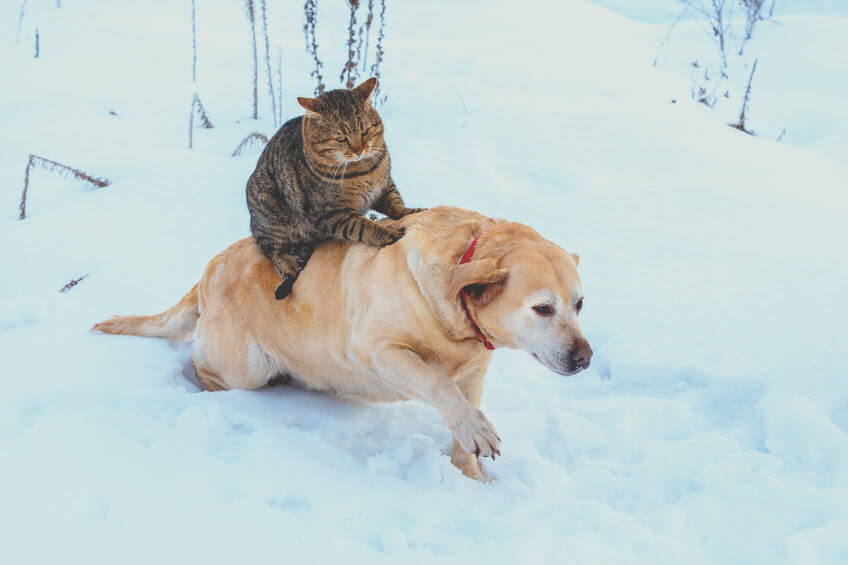
Pet Safety Tips For The Winter
Low temperatures have arrived and not only humans feel them, but also our pets, so we must be very attentive to how to detect cold in them. Although most pets are used to room temperature, if you have a dog that spends most of its time enjoying the backyard, or a kitten that sleeps on the front porch, the onset of winter can be a rude awakening for both of you. Luckily we have some pet safety tips for the winter to help you and your pets stay safe this time of year.
Know Their Limits
Like people, pets’ cold tolerance can vary from pet to pet based on their coat, body fat stores, activity level, and health. You must be aware of your pet’s tolerance for cold weather.
For example, you may have to shorten your dog’s walks in very cold weather. Older and arthritic pets may have a harder time walking on snow and ice.
Long-haired or thick-haired dogs tend to be more cold tolerant, but still take some risks in cold weather.
Short-legged pets can cool down faster because their bellies and bodies tend to come in contact with the frozen ground.
Pets with diabetes, heart disease, kidney disease or hormonal imbalances may have a harder time regulating their body temperature, making them more susceptible to extreme temperatures.
Tips for Taking Care of Your Pets During the Winter
- Pets enjoy comfortable places to sleep and can change their location according to their need for more or less heat. Provide some safe options that allow them to change sleeping places adapted to their needs.
- Like people, cats and dogs are susceptible to frostbite and hypothermia and must be kept indoors. No pets should be left outside for prolonged periods in freezing weather.
- The engine of a hot vehicle can be an attractive heat source for stray cats. That is why it is important to look under your vehicle, hit the hood and honk the horn before starting the engine to scare away the felines that are sheltering under your car.
- Check your dog’s paws frequently for signs of injury or damage from cold weather, such as cracked pads or bleeding. During a walk, a sudden limp may be due to injury or it may be due to ice buildup between the claws.
- If your dog has a short coat or seems upset from cold weather, consider a dog sweater. It’s good to have several on hand, so you can wear a dry sweater every time your dog goes outside.
- Shovel the path to bird feeders to avoid slipping.
- If your pet whines, trembles, seems anxious, stops moving, seems weak, or starts looking for warm places to burrow, get her indoors quickly because she is showing signs of hypothermia. If you suspect that your pet has hypothermia or frostbite, see your vet immediately.
- Keep your pet at a healthy weight all winter long. Observe your pet’s body condition and keep it within the healthy range. Talk to your vet about your pet’s nutritional needs during these winter days.

 Previous Post
Previous Post Next Post
Next Post